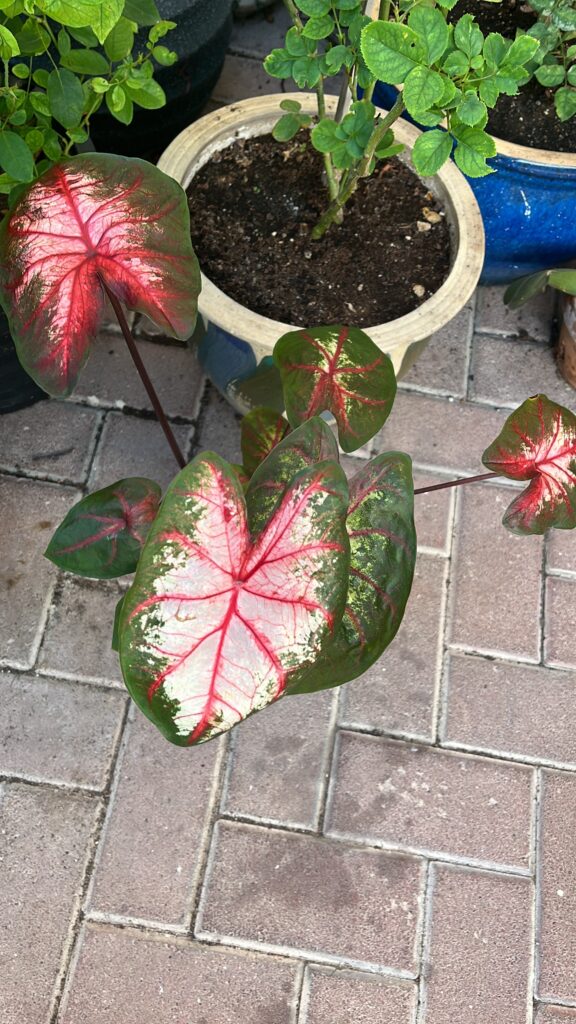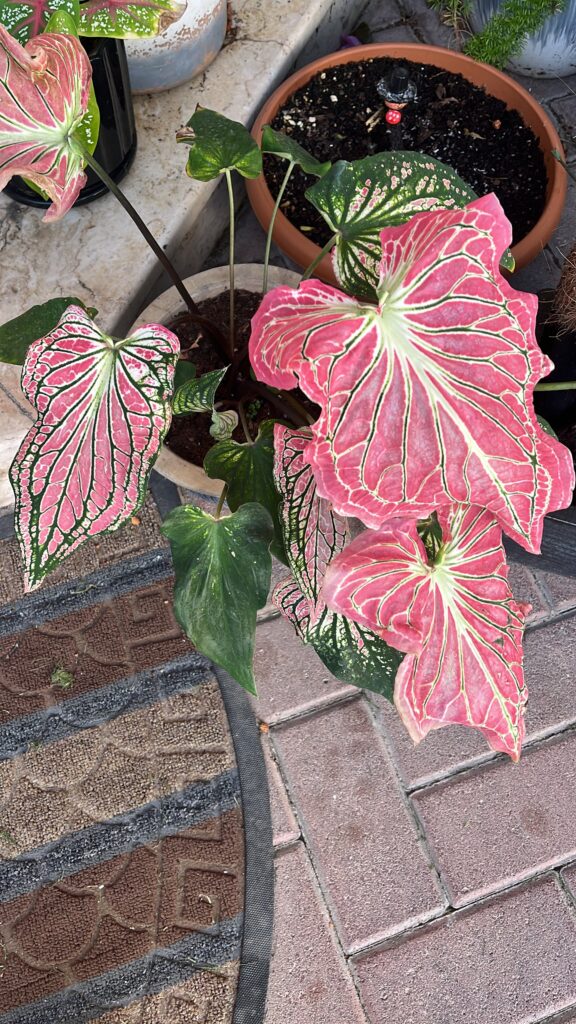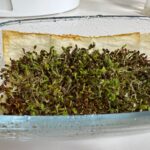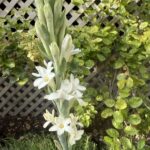Caladiums are gorgeous shrubs whose leaves rival flowers in their beauty. Many variations in colour and marking make an excellent addition to your garden, particularly in the shade. They add a splash of color in the shaded areas where many flowers may not bloom and can be potted together to create a vibrant kaleidoscope. Interestingly, their stems are petioles, softer and more tender than stems.


Caladiums are divided into two main groups – fancy leaved and strap leaved. Fancy-leaved caladiums have large heart-shaped leaves and grow to a height of 12- 20 inches. The Strap or Lance leaved group grow to about 12 inches and have narrower and ruffled leaves. They produce far more leaves per tuber than the first group.
I planted Caladiums from bulbs, and they took about a week to sprout. They require bright light to flourish but avoid direct sun as their leaves may scorch. Remember to pot in rich well-draining soil. They do require regular fertilizer but use a balanced or a low nitrogen fertilizer as the leaves may otherwise lose the vibrant colours.
Caladiums do enter dormancy even indoors after a few months in leaf. At that time stop watering completely and wait for the plant to resume growth before watering again. There are a huge number of cultivars available, and they add variety and joy to your otherwise green foliage. Caladiums can be propagated by dividing the tubers in spring before potting them up. Cut the tuber into pieces that contain at least one eye or knob; allow the cut pieces to dry for a few days to callous over before planting. All parts of the plant are poisonous if enough is ingested so keep them away from pets who like to chew on leaves. Some varieties may cause skin irritation for sensitive people. In the Gulf bring them in around the end of May or early June if you have no shade or keep them outside in the shade but remember to stop watering once the leaves die out so that they are ready for the next season.







Recent Comments